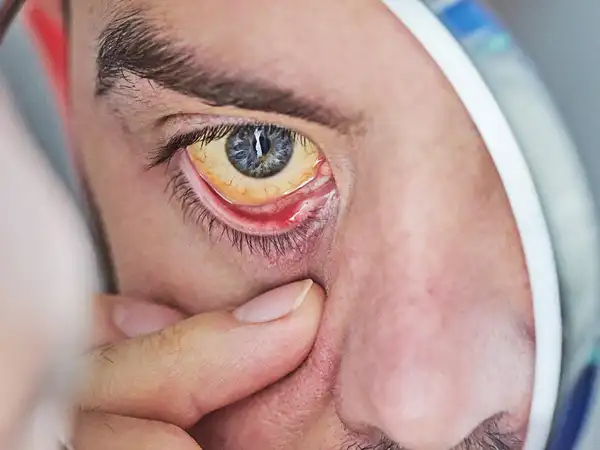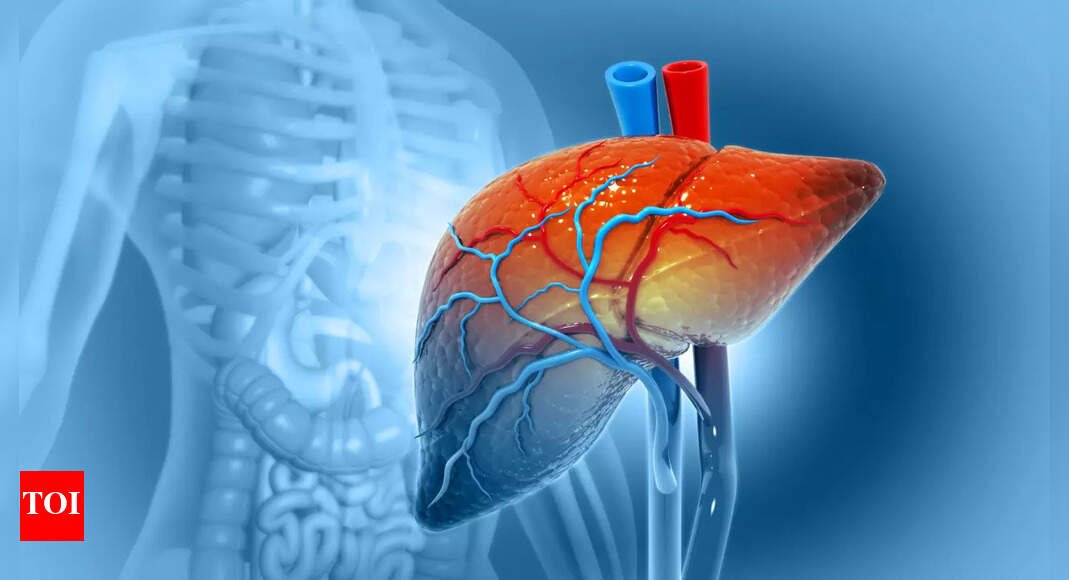Keeping your liver healthy is crucial for overall well-being. Let’s not forget that there literally is a ‘live’ in liver! The liver performs over 500 essential functions, including detoxification, nutrient processing, and bile production for digestion. Liver disease affects millions of people across the globe, and it is on the rise, more than ever. When liver disease develops, its early symptoms are often subtle and are mistaken for minor ailments or ignored entirely. This can delay diagnosis of conditions like hepatitis, fatty liver disease, or cirrhosis. Early diagnosis can be life-saving. Here are seven early symptoms of liver disease that you should not ignorePersistent fatigue and weakness

Feeling tired all the time is never a good sign. Chronic fatigue is one of the earliest and most common signs of liver dysfunction. The liver is responsible for converting nutrients into energy, and when it’s impaired, energy production gets disrupted. And as a result, one would often feel drained despite adequate sleep. Many dismiss it as stress or overwork, but persistent fatigue warrants a doctor’s visit.Abdominal pain or swelling

Abdominal pain is one of the earliest signs of liver disease. Any discomfort or bloating in the upper right abdomen, where the liver resides, may signal inflammation or an enlarged liver. In some cases, ascites, a buildup of fluid in the abdomen, can cause noticeable swelling. People tend to mistake this for indigestion, gas, or overeating.Jaundice

Yellowing of the skin and eyes is a crucial sign of jaundice. A subtle yellow tint in the skin or whites of the eyes signals jaundice, which is caused by a buildup of bilirubin when the liver can’t process it effectively. Mild jaundice is often mistaken for a tan or poor lighting. Even slight yellowing, especially if accompanied by other symptoms, requires immediate medical evaluation to assess liver function and prevent further damage.Itchy skin

Unexplained persistent itching, particularly on the hands, feet, or entire body, can indicate liver issues. This is because when the liver fails to clear bile salts, they accumulate under the skin and cause irritation. People often think this itching is related to allergies, eczema, or dry skin. If over-the-counter remedies don’t relieve the itch, it hints at an underlying liver problem that requires investigation.
Dark urine

Changes in urine also hinted at impaired liver function. Urine that appears dark, amber, or brown, even with adequate hydration, can indicate excess bilirubin being excreted through the kidneys. People assume it’s just dehydration. If you experience this symptom, along with other signs like jaundice, seek immediate medical attention.Weight loss

Sudden, unintentional weight loss can occur when the liver struggles to metabolize nutrients. This may lead to reduced appetite or disrupted digestion. While some may see weight loss as a positive change, if it’s unexplained and rapid, it’s alarming.Changes in stool colorPale color stool is a crucial sign of liver damage. Clay-colored, or grayish stools, can result from reduced bile production or blocked bile ducts, both tied to liver function. Unusually dark or tarry stools may indicate internal bleeding or liver-related issues.
var _mfq = window._mfq || [];
_mfq.push([“setVariable”, “toi_titan”, window.location.href]);
!(function(f, b, e, v, n, t, s) {
function loadFBEvents(isFBCampaignActive) {
if (!isFBCampaignActive) {
return;
}
(function(f, b, e, v, n, t, s) {
if (f.fbq) return;
n = f.fbq = function() {
n.callMethod ? n.callMethod(…arguments) : n.queue.push(arguments);
};
if (!f._fbq) f._fbq = n;
n.push = n;
n.loaded = !0;
n.version = ‘2.0’;
n.queue = [];
t = b.createElement(e);
t.async = !0;
t.defer = !0;
t.src = v;
s = b.getElementsByTagName(e)[0];
s.parentNode.insertBefore(t, s);
})(f, b, e, ‘https://connect.facebook.net/en_US/fbevents.js’, n, t, s);
fbq(‘init’, ‘593671331875494’);
fbq(‘track’, ‘PageView’);
};
function loadGtagEvents(isGoogleCampaignActive) {
if (!isGoogleCampaignActive) {
return;
}
var id = document.getElementById(‘toi-plus-google-campaign’);
if (id) {
return;
}
(function(f, b, e, v, n, t, s) {
t = b.createElement(e);
t.async = !0;
t.defer = !0;
t.src = v;
t.id = ‘toi-plus-google-campaign’;
s = b.getElementsByTagName(e)[0];
s.parentNode.insertBefore(t, s);
})(f, b, e, ‘https://www.googletagmanager.com/gtag/js?id=AW-877820074’, n, t, s);
};
function loadSurvicateJs(allowedSurvicateSections = []){
const section = window.location.pathname.split(‘/’)[1]
const isHomePageAllowed = window.location.pathname === ‘/’ && allowedSurvicateSections.includes(‘homepage’)
if(allowedSurvicateSections.includes(section) || isHomePageAllowed){
(function(w) {
function setAttributes() {
var prime_user_status = window.isPrime ? ‘paid’ : ‘free’ ;
var geoLocation = window?.geoinfo?.CountryCode ? window?.geoinfo?.CountryCode : ‘IN’ ;
w._sva.setVisitorTraits({
toi_user_subscription_status : prime_user_status,
toi_user_geolocation : geoLocation
});
}
if (w._sva && w._sva.setVisitorTraits) {
setAttributes();
} else {
w.addEventListener(“SurvicateReady”, setAttributes);
}
var s = document.createElement(‘script’);
s.src=”https://survey.survicate.com/workspaces/0be6ae9845d14a7c8ff08a7a00bd9b21/web_surveys.js”;
s.async = true;
var e = document.getElementsByTagName(‘script’)[0];
e.parentNode.insertBefore(s, e);
})(window);
}
}
window.TimesApps = window.TimesApps || {};
var TimesApps = window.TimesApps;
TimesApps.toiPlusEvents = function(config) {
var isConfigAvailable = “toiplus_site_settings” in f && “isFBCampaignActive” in f.toiplus_site_settings && “isGoogleCampaignActive” in f.toiplus_site_settings;
var isPrimeUser = window.isPrime;
var isPrimeUserLayout = window.isPrimeUserLayout;
if (isConfigAvailable && !isPrimeUser) {
loadGtagEvents(f.toiplus_site_settings.isGoogleCampaignActive);
loadFBEvents(f.toiplus_site_settings.isFBCampaignActive);
loadSurvicateJs(f.toiplus_site_settings.allowedSurvicateSections);
} else {
var JarvisUrl=”https://jarvis.indiatimes.com/v1/feeds/toi_plus/site_settings/643526e21443833f0c454615?db_env=published”;
window.getFromClient(JarvisUrl, function(config){
if (config) {
const allowedSectionSuricate = (isPrimeUserLayout) ? config?.allowedSurvicatePrimeSections : config?.allowedSurvicateSections
loadGtagEvents(config?.isGoogleCampaignActive);
loadFBEvents(config?.isFBCampaignActive);
loadSurvicateJs(allowedSectionSuricate);
}
})
}
};
})(
window,
document,
‘script’,
);
#early #symptoms #liver #disease



